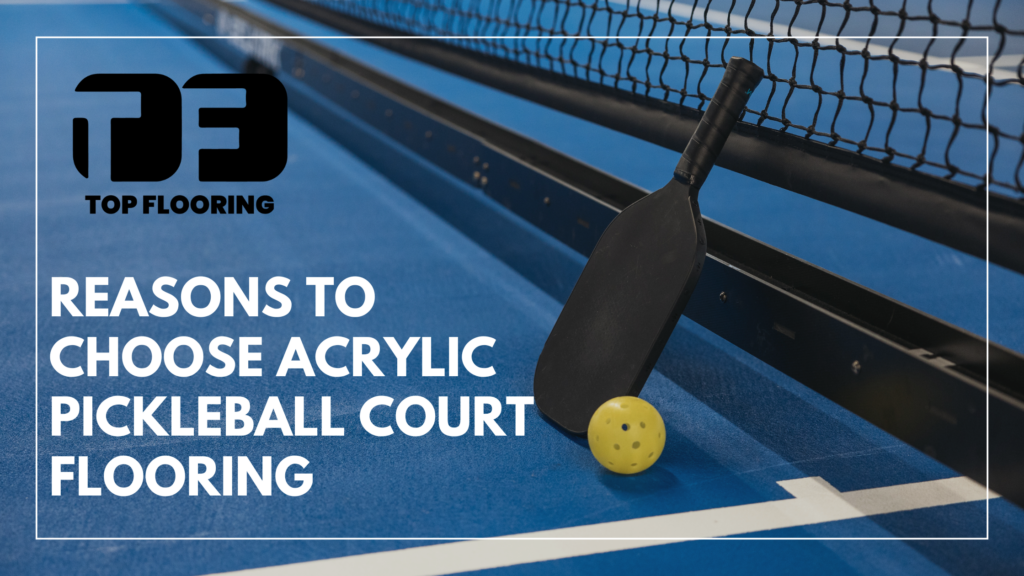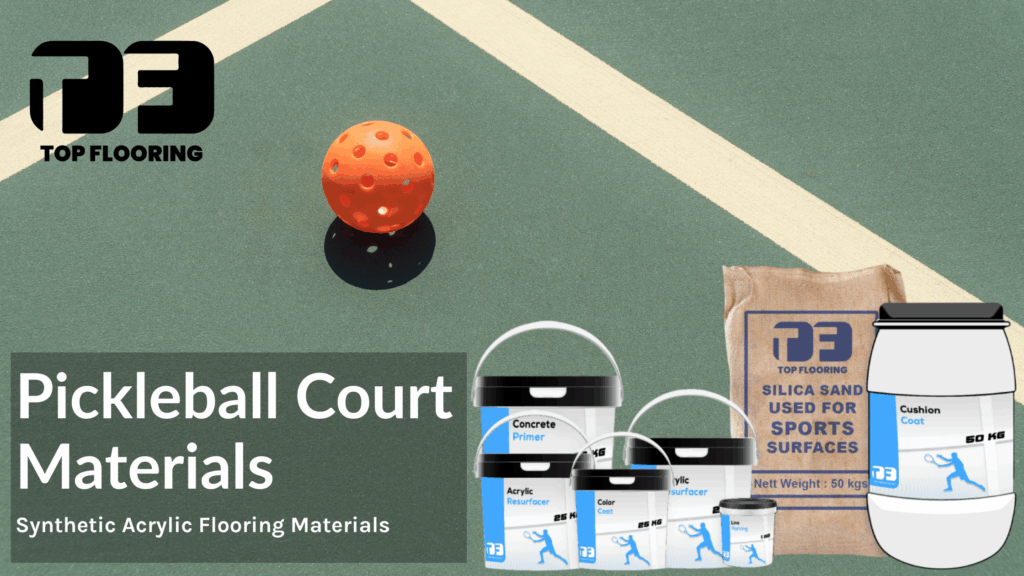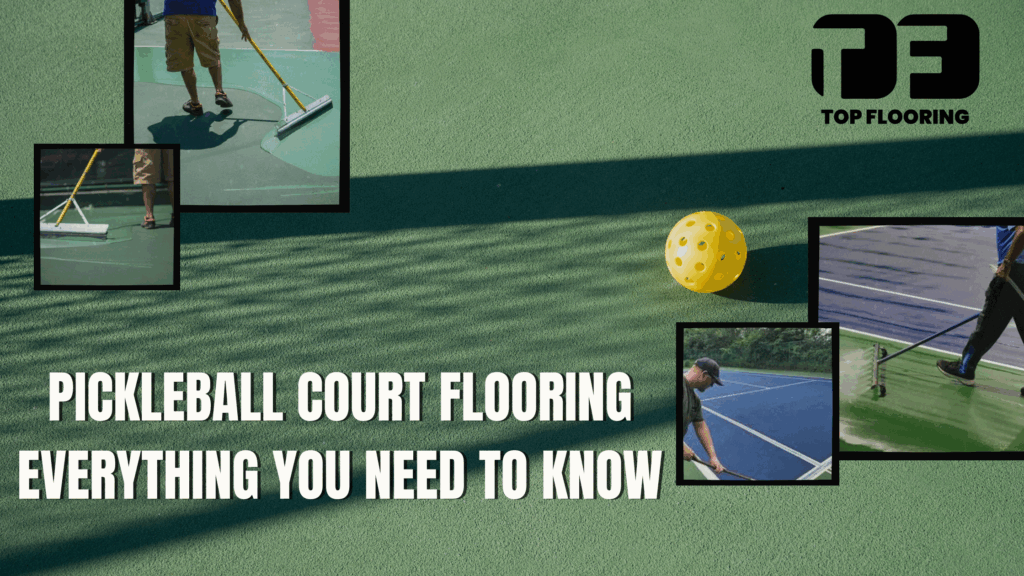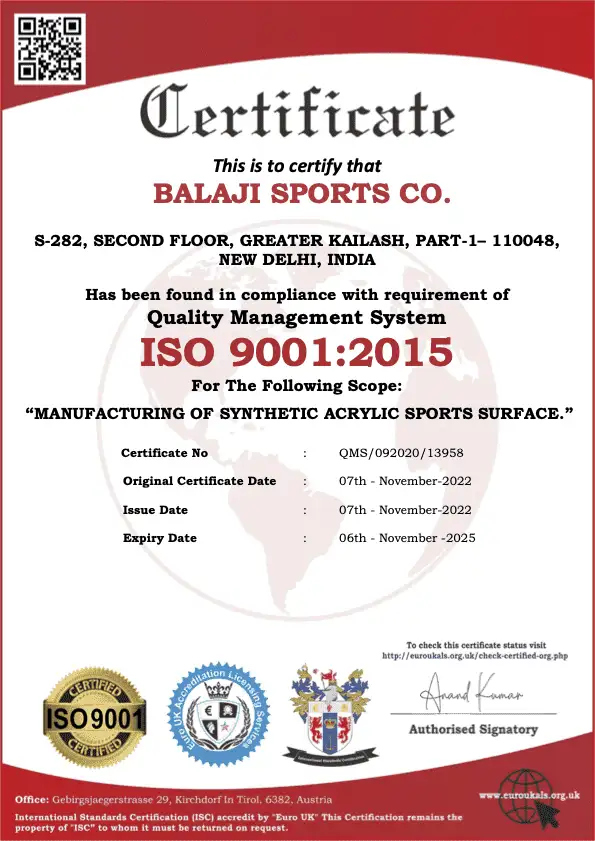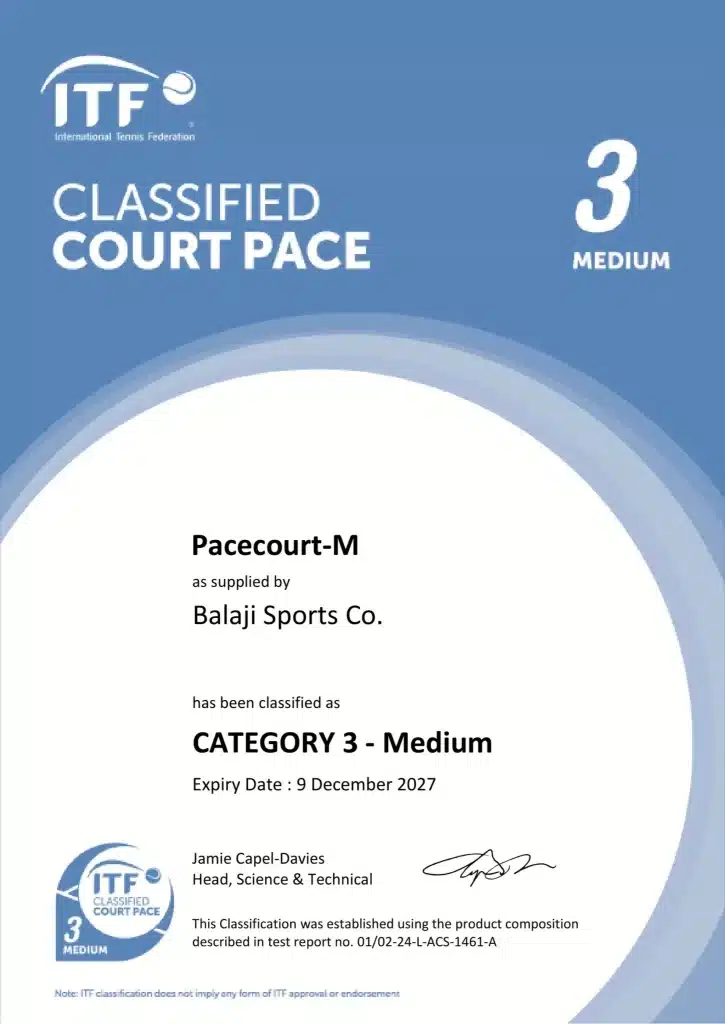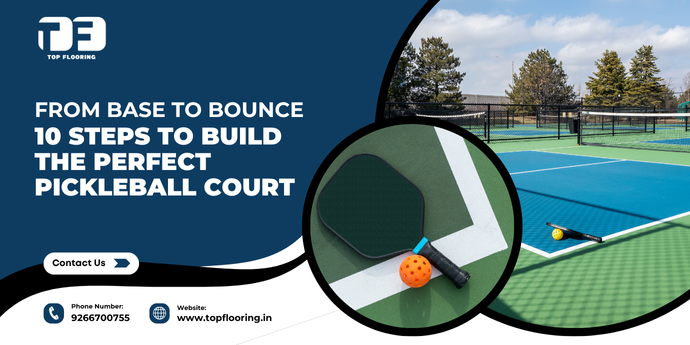
Pickleball is no longer a niche activity – it’s one of the fastest growing sports in the world and spreading rapidly in India. Its unique combination of tennis, badminton and ping pong makes it easy to learn and fun for all ages. From schools and housing societies to professional clubs and private villas, the demand for pickleball courts is increasing every year. For communities, institutions and those building a home pickleball court, understanding the right pickleball court flooring and construction process ensures the investment gives long term value. With advancements in synthetic acrylic pickleball court material technology, India now has access to globally approved systems through leading suppliers like Top Flooring, who provide materials engineered for local climate conditions while meeting international standards.
1. Pickleball Court Basics: Size and Dimensions
Before we get into pickleball court construction materials, let’s understand the pickleball court size in meters, as dimensions directly impact play quality and player movement.
- Standard Size: A regulation pickleball court size is 13.41 meters long and 6.10 meters wide, enough space for singles and doubles matches while compact compared to tennis courts.
- Non-Volley Zone (Kitchen): Extends 2.13 meters from the net on both sides, prevents aggressive volleys near the net and ensures the game’s unique balance of strategy and control.
- Net Height: The pickleball net is 0.91 meters at the sidelines and 0.86 meters at the center, perfect balance of clearance and challenge.
These dimensions are same for both outdoor and indoor pickleball courts, though indoor pickleball court flooring uses different finishes to enhance grip, bounce and visibility under artificial lighting.
2. Building a Solid Base: The Foundation of a Pickleball Court
A great pickleball court starts with a strong foundation. And if that falls apart even the best pickleball flooring will eventually wear down. The base is more than just a foot to stand on. It also shields the top layer from taking a beating – cracks, water damage, and uneven play can all take its toll if the base isn’t good.
Poured for a Lifetime – Concrete Base
Concrete is going to be your best bet for a pickleball court that can stand up to the heavy use and long hours that these courts see. It’s going to require a less maintenance than other bases. And if you do run into issues down the line it won’t be too hard to fix. Plus, this stuff lasts – it can outlast a lot of other options out there. That’s why it’s so popular for pro pickleball court construction and high-level tournaments.
Not the Cheapest Option – Asphalt Base
Asphalt is a more affordable way to get a court up and running. If you’re working on a tight budget or you’re trying to get a community project off the ground. That being said, it’s a lot more prone to cracking and wear than some other options. That means you’ll need to be on top of maintenance and inspections if you want it to keep performing well. It’s usually the go-to option for schools, community clubs and smaller pickleball setups that can handle the occasional resurfacing.
Don’t Forget Slope and Drainage
Both concrete and asphalt bases have to have a good slope – 1:100. If not, your pickleball court is going to start looking like a swamp. Without good water drainage, you can end up with waterlogged surfaces, moss growth and cracking. Which is compromising safety and shortening the lifespan of your surface.
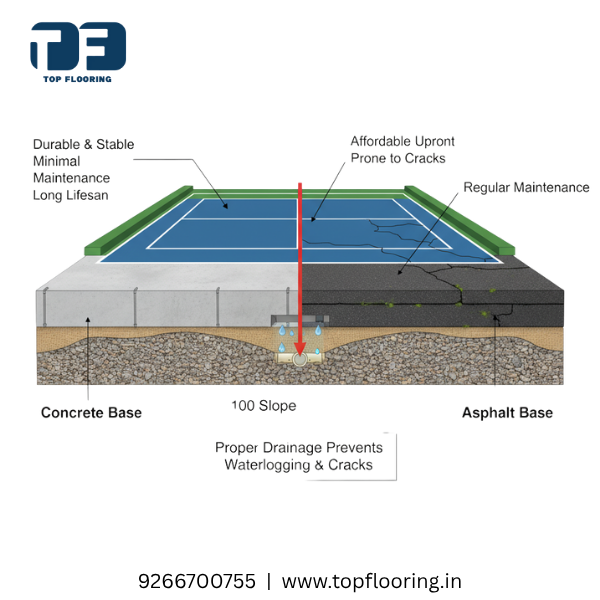
3. The Importance of Pickleball Court Flooring
The surface of your pickleball court is what really matters when it comes to how the game plays out. It’s what’s going to affect how fast the ball bounces, whether it’s slippery or not. Whether you’re going to be comfortable playing on it. Selecting the right flooring for your court is a big deal. If you’re looking to build an outdoor club, a pro academy or just a court for your backyard.
The Most Popular Choice – Acrylic Flooring
Things have really moved forward with acrylic flooring – ITF-approved synthetic flooring systems can offer a pro-grade playing surface that’s consistent and gives a ball a predictable bounce every time. What’s more, this stuff is built to last – you’re not going to see it wearing out or losing its grip in the sun or in the rain. And the best part is, it can be customised to your needs – medium, fast or anywhere in between – and still look brand new years down the line. Withstanding Indian weather isn’t a problem – it can take the heat, the heavy rain and all the rest.
Acrylic Flooring (The Most Popular Choice)
- High-performance synthetic systems that meet professional-grade play standards – giving you a consistent bounce and a predictably responsive court surface every time.
- Tough, UV-resistant coatings that can withstand India’s blistering summers and torrential monsoon rains, keeping your court looking good as new.
- Customise the court to your needs with our range of ball bounce and grip options, giving you the flexibility to choose a medium or fast pace court that’s up to your standards, while still delivering long-lasting quality.
- Durable enough for even the toughest Indian climate, our floors have been proven to resist cracks, colour fade and wear, even under heavy usage.
Cushioned Acrylic Flooring Systems
- Built-in shock absorption to help reduce fatigue and player discomfort during long matches, and a layer of extra comfort to boot.
- Safety first, our cushioned flooring is a great choice for people recovering from injury or who play pickleball recreationally – because we know how much a good court can help prevent long-term problems.
- Perfect for academies and multi-sport facilities, where you need a court that delivers on both performance and player well-being without breaking the bank.
Polypropylene Tiles (PP)
- Modular, flexible flooring that can be slotted together to fit any space, and installed with minimal fuss and expense.
- Easy to maintain and repair, since individual tiles can be swapped out without disturbing the rest of the surface – saving you time and money.
- A budget-friendly option for temporary or portable courts, where durability and flexibility are key – often used in schools, housing developments or anywhere you need to move things around.
Indoor Pickleball Flooring
- Non-glare and Non-slip Finish:- ensuring the highest level of safety and visibility under artificial lighting conditions.
- Indoor floors are designed to be a bit softer on the joints, compared to outdoor courts – meaning you can play for longer without putting excessive stress on your body.
- Indoor court experience that’s all about the player – smooth movement, consistent ball bounce and a court that’s tailored to your needs, every time.
Each of these options has its advantages, but at the end of the day, synthetic acrylic court material comes out on top – and for good reason. Its adaptability, weather resistance and ITF approval make it the gold standard for pickleball courts in India.
4. Extra Pickleball Court Features
Color Coating and Line Markings
- Standard pickleball courts are painted green, blue or red which looks great.
- White lines are applied to keep everything clear and visible during fast paced rallies.
- Acrylic color coatings are UV resistant so the court will look and perform for many years.
Net & Posts
- Regulation height nets are important for fairness and consistency whether for casual play or tournaments.
- Courts can have permanent posts for stability or portable nets for multi use spaces and easy storage.
- The right net system ensures smooth play and overall professional look of the court.
Fencing & Lighting
- Chain link fencing keeps the ball contained so no interruptions and safer.
- LED lighting extends play into the evening, bright and energy efficient. Together fencing and lighting turns the court into a full-fledged sports facility.
- All these extras turn a simple surface into a professional grade pickleball court floor with playability, aesthetics, safety and convenience.
5. Cost of Pickleball Court Construction
One of the most searched query today is cost of pickleball court construction as individuals, schools and clubs are evaluating their budget before starting a project. The total cost depends on the base, type of pickleball court material and complexity of installation. Below is the breakup of typical costs in India:
- Base Layer (Concrete/Asphalt): ₹8–9 lakh
The base of every court, this layer ensures structural stability and proper drainage. Concrete is long term durable with minimal maintenance, asphalt is more budget friendly but needs regular upkeep. - Pickleball Court Material (Acrylic, 5–8 Layer System): ₹4–6 lakh:
The acrylic surface system defines how the game is played, delivers consistent bounce, grip and weather resistance. A 5 layer system is sufficient for community use, 8 layers with cushioning is recommended for academies and professional play. - Labor & Installation: ₹2–3 lakh
Skilled application of acrylic coats, line marking and finishing requires trained professionals. This cost also includes technical aspects like slope adjustment, curing and ensuring ITF compliant surfaces for long lasting play. - Total Estimate: ₹14–18 lakh per Standard Court
A full sized court built with proper specifications, high quality acrylic material and professional installation usually falls in this range. While the upfront cost may seem high, the durability and low maintenance of synthetic acrylic is a long term investment.
For home pickleball court the cost can be reduced by scaling down the dimensions, choosing fewer cushion layers or simplifying add-ons like fencing and lighting. This makes the game more accessible while still having professional level performance on a smaller budget.
6. DIY vs Professional Pickleball Court Builders
Many think of building a home pickleball court themselves, but court construction is highly technical. Professional pickleball court builders and certified pickleball court installation experts bring so much value by ensuring international play standards, material precision and long term durability.
- Slope and drainage setup:
A professional builder ensures the base has a slope of 1:100 so water runs off and no puddles form during rain. This drainage system is essential to avoid long term damage, surface cracks and slippery conditions. - ITF approved acrylic systems for consistent play:
Experts use synthetic acrylic layers tested and certified for ball bounce, friction and speed. These systems ensure the court plays uniformly across the surface just like international tournament courts. - Crack free and UV resistant surfaces:
Professional installation uses specialized primers, resurfacers and cushion coats that bond strongly to the base. These layers protect the court from UV rays, heat and moisture, keeping it crack free even in India’s extreme climate. - Long term durability with recoat cycles:
Builders plan maintenance cycles from the beginning, recommending recoats every 3-5 years. This proactive approach ensures the pickleball court floor stays smooth, safe and looks good for over a decade.
While DIY projects may seem cost effective, mistakes in slope, material application or curing time can result in higher repair costs. Professional pickleball court construction ensures a reliable surface that saves you money and delivers better play in the long run.
7. Why Material Matters for Performance
The material you choose for pickleball court directly impacts how the game feels and how long the surface lasts. Every aspect – from bounce to traction – affects player safety and gameplay experience.
- Ball Bounce: Acrylic systems deliver uniform and predictable bounce, fair rallies and consistent play for all levels. Modular PP tiles can sometimes create irregular rebounds which can affect competitive matches. A true surface ensures professional grade playability.
- Traction: High quality anti-slip finishes on acrylic courts give players the confidence to move fast without fear of slipping. Proper traction reduces fall injuries and improves footwork for both beginners and pros. This makes the court safer and more enjoyable for long practice sessions.
- Weather Resistance: Outdoor acrylic flooring is designed to withstand sun, monsoons and temperature fluctuations. Unlike cheaper coatings that fade or peel, these systems are UV stable and crack free for years. Perfect for Indian climate.
- Player Comfort: Cushion coat systems absorb shock, reduces strain on knees, hips and ankles. Especially useful for regular players as it minimizes long term injuries. Comfort driven design encourages more court usage.
Investing in the right pickleball court flooring means not just durability but international level play quality, aligns performance with global standards and player health and safety.
8. Building a Home Pickleball Court: What to Know
More and more homeowners are converting their backyard spaces into pickleball courts, considering it as a lifestyle upgrade and long term investment. While space and budget may be limited compared to full size professional projects, smart design choices can create a functional and fun play area at home.
- Smaller size (can also be half-court):
For residential areas, a compact or half-court design helps to optimize the available space while still maintaining the feel of the game. This way families can play and practice casually without needing a large open plot. - Multipurpose acrylic flooring for low maintenance:
Synthetic acrylic surfaces are perfect for backyard courts as they are weather resistant, crack proof and low maintenance. Once installed they provide consistent bounce and grip, reducing the hassle of frequent repairs or resurfacing. - Portable nets instead of permanent posts:
Portable net systems are convenient for homeowners as they can be set up when needed and stored away when the court space is used for other activities. This flexibility makes it easier to balance recreation with everyday use of the backyard. - Minimal fencing for backyard play:
Simple chain-link or modular fencing around the court helps to keep the ball within the play area, avoiding interruptions. It also adds a professional touch without heavy investment, making backyard pickleball more organized and safe.
A private pickleball court floor not only increases property value but also provides a healthy recreational option for families. With the right planning a home court becomes a space for fitness, bonding and entertainment all year round.
9. Why Professional Pickleball Court Builders Matter?
While DIY may seem budget friendly, certified pickleball court builders ensure the court’s structural integrity, safety and performance longevity. The process of pickleball court installation requires expertise in slope creation, base stability, drainage solutions and careful application of acrylic layers.
Top Flooring is one of India’s trusted suppliers of synthetic acrylic pickleball court flooring systems, providing end to end solutions from primer to final coat. Each system is engineered for Indian weather conditions, designed to withstand UV rays and recognized for ITF approved play quality. By using Top Flooring’s material systems, pickleball courts get unmatched strength, durability and global standard performance.
Top Features of Top Flooring Materials
- Slope and base integration
Ensures proper water drainage and surface flatness, no waterlogging and uneven bounce. This technical precision is must for long term court stability. - Long lasting, crack free acrylic systems
Synthetic coatings are designed to withstand heat, rain and humidity, reduces surface cracks and extends court life. Ideal for Indian climate. - ITF classified surfaces with consistent bounce and grip
Every layer is formulated to provide international standard ball response, traction and comfort. This ensures fair play for both casual and competitive matches. - Smooth installation that extends court life and reduces long term maintenance cost
Properly applied coatings ensures stronger adhesion and seamless finishing, reduces frequent repairs. Result is a professional grade pickleball court floor with lower lifetime cost.
With Top Flooring’s pickleball court material, schools, clubs, academies and residential projects can create courts that meet international standards and performs well in Indian conditions.
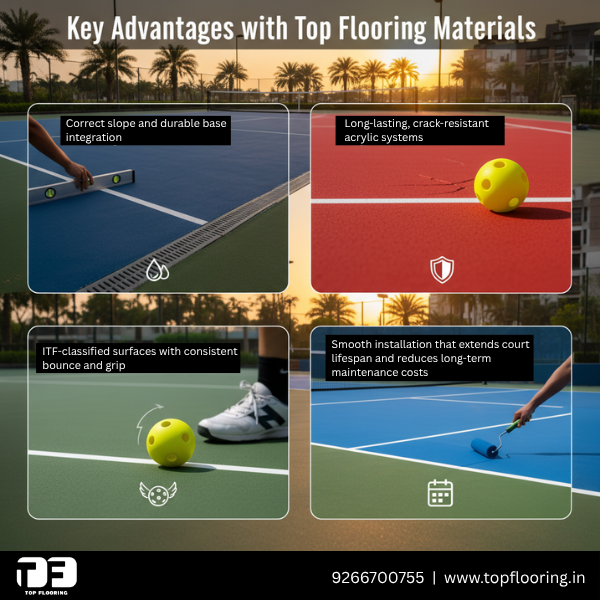
10. Maintenance Tips for Long Lasting Courts
To maximize investment, maintenance is must. Even the most durable pickleball court flooring needs regular attention to ensure safety, performance and long life. Here are the tips:
- Clean the surface weekly to avoid dust and moss.
A quick sweep or wash prevents dirt, leaves and moss from building up on the surface. Clean courts look professional and maintains proper traction, reduces slip hazards during play. Regular cleaning preserves the original court color and finish. - Don’t drag sharp objects on the court.
Heavy equipment, chairs or sharp-edged tools can scratch or cut the surface layers. Even small abrasions weaken the protective acrylic coating and reduces durability. Using protective mats or designated pathways keeps the court free from accidental damage. - Recoat every 3-5 years for acrylic systems.
Acrylic pickleball court material is designed for long term use, but sun, rain and daily play slowly wears it down. A professional recoat every few years refreshes the surface, restores grip and ball bounce consistency and extends court life.Check every year for cracks or waterlogging.
With proper maintenance pickleball flooring will last well over a decade and is a great investment for both private and community courts.
Conclusion
A pickleball court is more than just a flat surface—it’s a system where every layer matters. From the base preparation in concrete or asphalt to the top synthetic acrylic layers, every stage determines the court’s performance, durability and safety. Whether it’s an indoor setup with non-glare finishes or an outdoor facility that can withstand heat and rain, the right pickleball court material will give you consistent bounce, slip resistance and long play.As pickleball takes off in India, the role of trusted suppliers like Top Flooring becomes crucial. By providing ITF classified, UV resistant and climate tuned pickleball flooring systems, Top Flooring helps academies, clubs, schools and residential projects create courts that meet global play standards and are cost effective.
Frequently Asked Questions
A pickleball court is usually made of a concrete or asphalt base with an acrylic flooring system on top.
The cost of pickleball court construction ranges from ₹14–18 lakh depending on base, flooring system, and add-ons.
A standard court measures 13.41m × 6.10m.
Yes, indoor pickleball court flooring provides anti-slip and softer finishes for safe play.
Professional pickleball court builders and certified installers specialize in designing and constructing courts with ITF-approved materials.
Yes, while both use acrylic, pickleball flooring is designed with specific friction, grip, and bounce standards.

